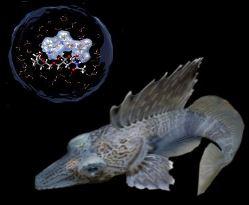Scientists reveal natural antifreeze secrets
In their study, published in the American journal PNAS (Proceedings of the National Academy of Sciences), the researchers biochemically created a fluorescent marker version of the AFP that allowed for direct observation under a microscope lens. They injected this protein into custom-designed microfluidic devices with minute diameter channels.
The microfluidic devices were placed in cooling units engineered with a temperature control at the level of a few thousandth of a degree, so that ice crystals of 20 to 50 micrometers could be grown and melted controllably, all under microscopic observation.
Using their specialized system, the researchers were able to show that ice grown and incubated in an antifreeze solution remains coated with protein and therefore protected. They further showed that the AFPs bind ice directly and strongly enough so as to prevent the ice from growth even after there is no longer any further presence of protein in the solution.
The significance of the findings published in this study is not only on the scientific level but also practical. For example, fish AFPs are already used in low-fat ice cream to prevent ice recrystallization, thereby maintaining a soft, creamy texture. These proteins could be used in other frozen foods for maintaining the desired texture without additional fats, say the researchers.
In medicine, AFPs can be used to improve the quality of sperm, ovules and embryos stored in a frozen state, and for cold or cyropreservation of organs (freezing at extremely low temperatures) for transplantation. They can also be used in cryosurgery and in agriculture. Other studies on AFPs focus on preparation of recombinant plants and fish with improved survival rates under cold and dehydration conditions. Such recombinant crops may improve food dispersion over the world, the researchers believe.
By Viva Sarah Press

